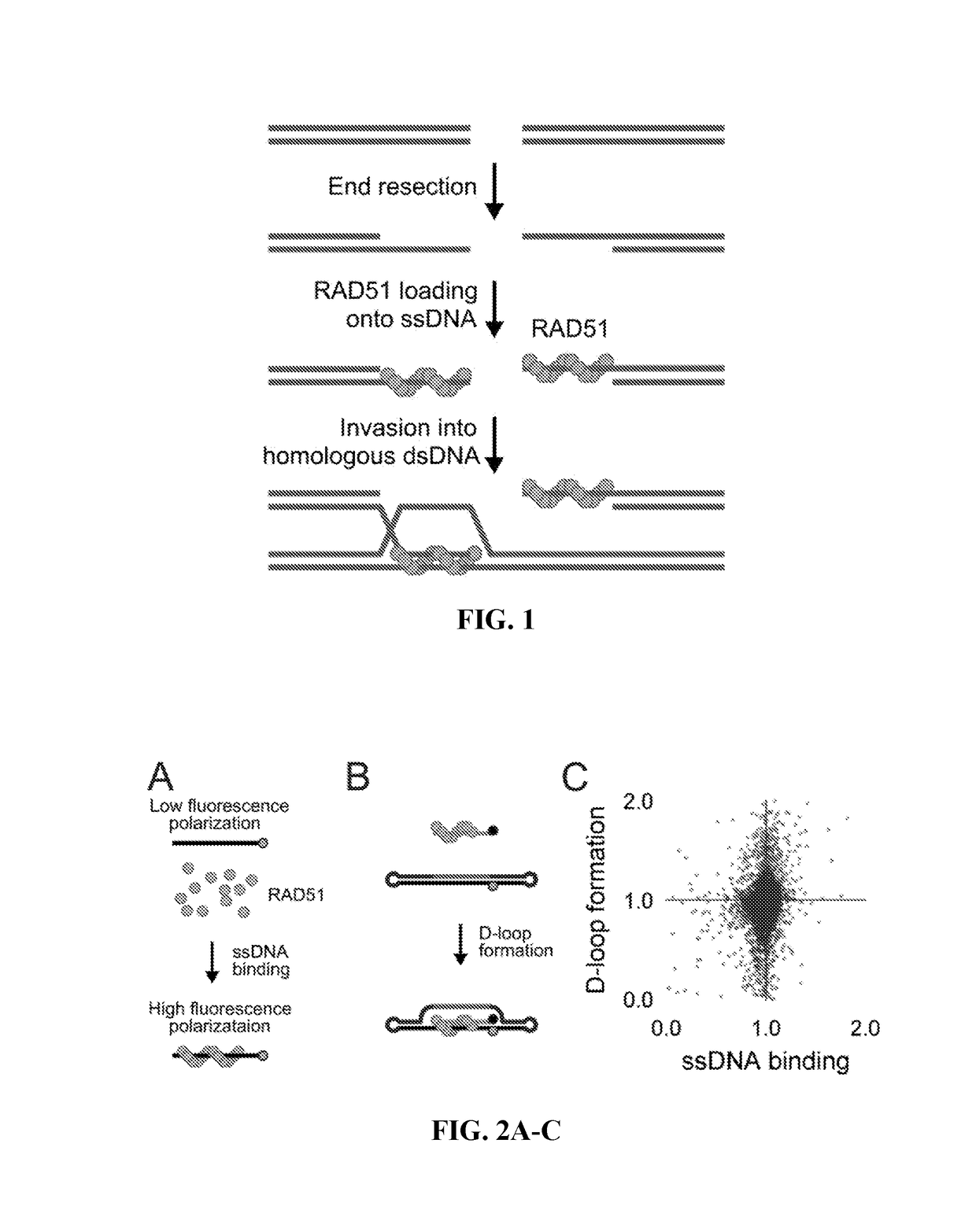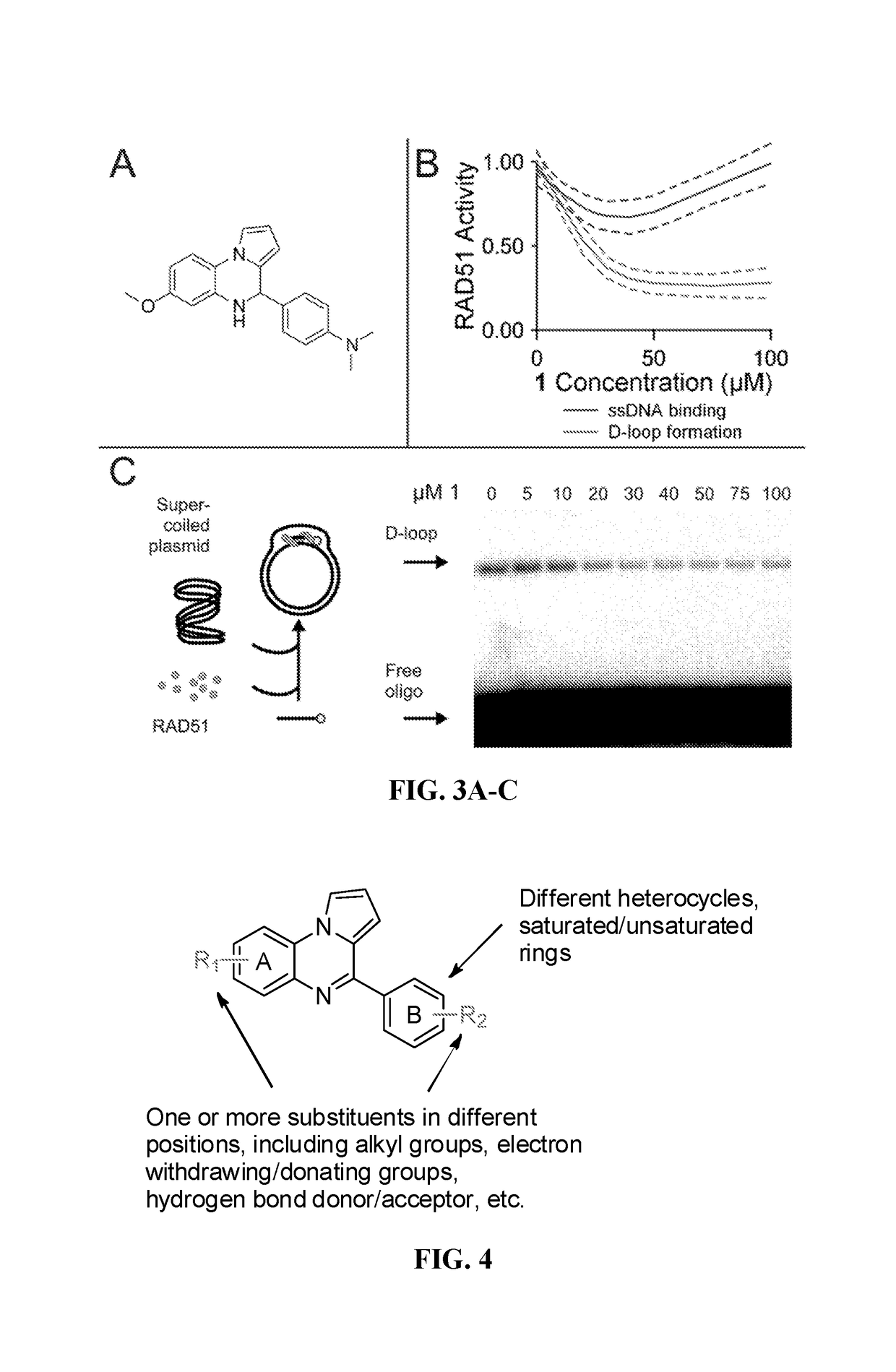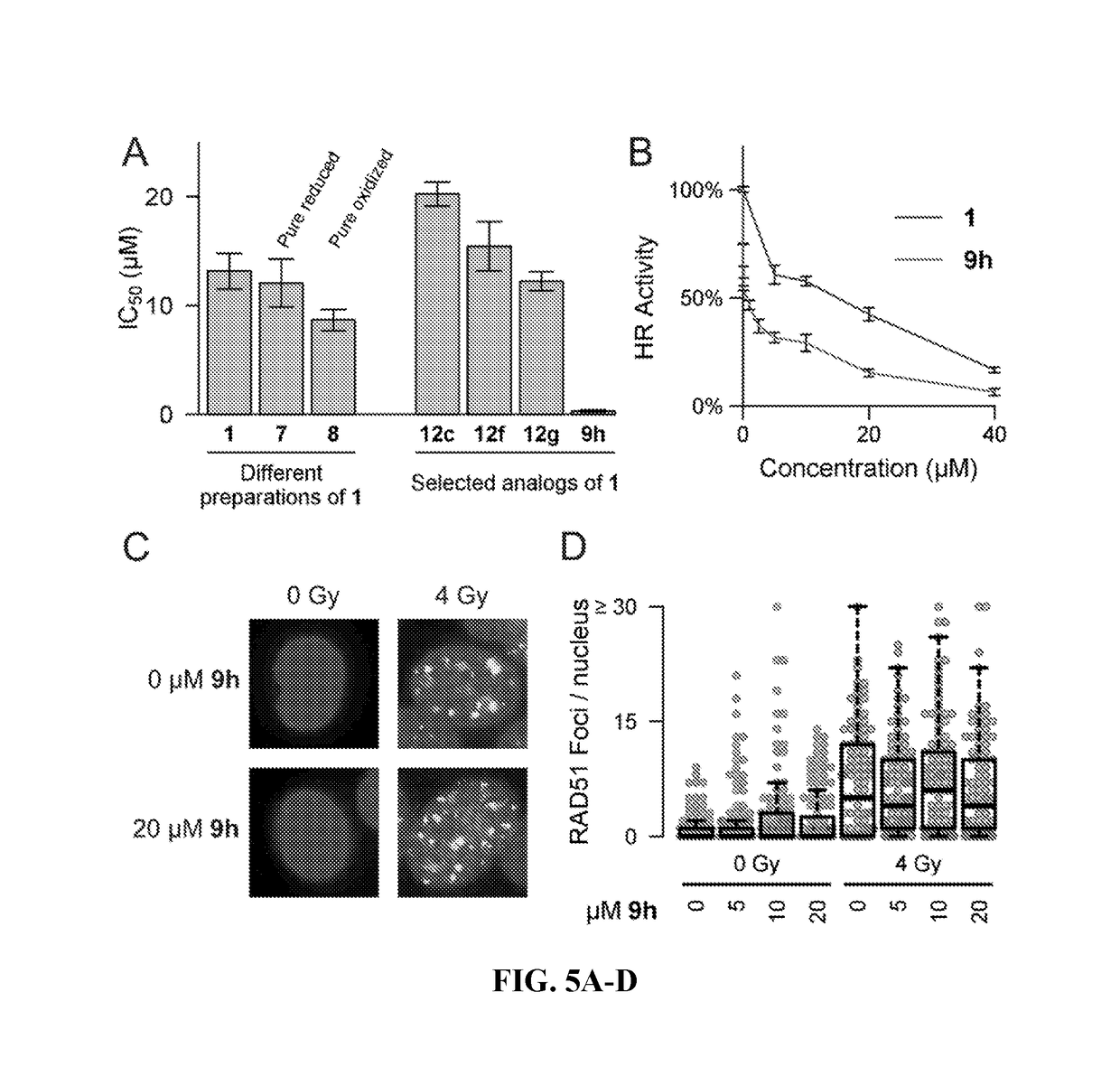Small molecules inhibitors of rad51
a small-molecule inhibitor and rad51 technology, applied in the field of biochemistry, cell biology, organic chemistry, oncology, can solve the problems of predicted unintended toxicity to normal cells, and achieve the effect of reducing, inhibiting, or minimizing the activity of rad51 d-loop
- Summary
- Abstract
- Description
- Claims
- Application Information
AI Technical Summary
Benefits of technology
Problems solved by technology
Method used
Image
Examples
example 1
Screen for RAD51 D-Loop Inhibitors
[0123]Two parallel HT screens to identify small molecules that inhibit RAD51 D-loop activity without affecting its ssDNA binding activity. A previously-described fluorescence polarization-based microplate assay was used to assess the compounds' effects on RAD51-ssDNA binding 23 (FIG. 2a). In order to enable a screen for D-loop specific RAD51 inhibitors, a microplate-based assay that can accurately quantify D-loop formation in a high-throughput fashion 24 (FIG. 2b) was previously developed. This method makes use of two substrates: a closed linear double-hairpin dsDNA, and an ssDNA fused with a black hole quencher. The sequence homology of the two substrates enables RAD51 to catalyze the formation of D-loops, which is quantified as a function of quenched fluorescence. Among the screening compounds tested, those that prevented RAD51 D-loop formation while exerting little effect on RAD51-ssDNA binding (FIG. 2c) were of primary focus. Potential hits were...
example 2
Cells, Media, and Plasmids
[0124]The 293-DR-GFP reporter cell line and pCBASce plasmid were described previously.27 Cell cultures were maintained in complete DMEM (DMEM+4.5 g / L D-glucose+L-glutamine+10% fetal calf serum+penicillin / streptomycin).
example 3
Screening Libraries
[0125]High-throughput screening of the ASDI Diversity library of 6800 compounds and the Library of Pharmacologically Active Compounds (LOPAC1280) was conducted. From each of the library master plates, 2.5 nmol of compound was acoustically transferred to individual assay plates at Nextval, Inc. This gave a final concentration of 50 μM for each library compound in 50 μl per well of final reaction volume for both the RAD51-DNA binding and RAD51-mediated strand pairing assays.
PUM
| Property | Measurement | Unit |
|---|---|---|
| volume | aaaaa | aaaaa |
| pH | aaaaa | aaaaa |
| temperature | aaaaa | aaaaa |
Abstract
Description
Claims
Application Information
 Login to View More
Login to View More - R&D
- Intellectual Property
- Life Sciences
- Materials
- Tech Scout
- Unparalleled Data Quality
- Higher Quality Content
- 60% Fewer Hallucinations
Browse by: Latest US Patents, China's latest patents, Technical Efficacy Thesaurus, Application Domain, Technology Topic, Popular Technical Reports.
© 2025 PatSnap. All rights reserved.Legal|Privacy policy|Modern Slavery Act Transparency Statement|Sitemap|About US| Contact US: help@patsnap.com



